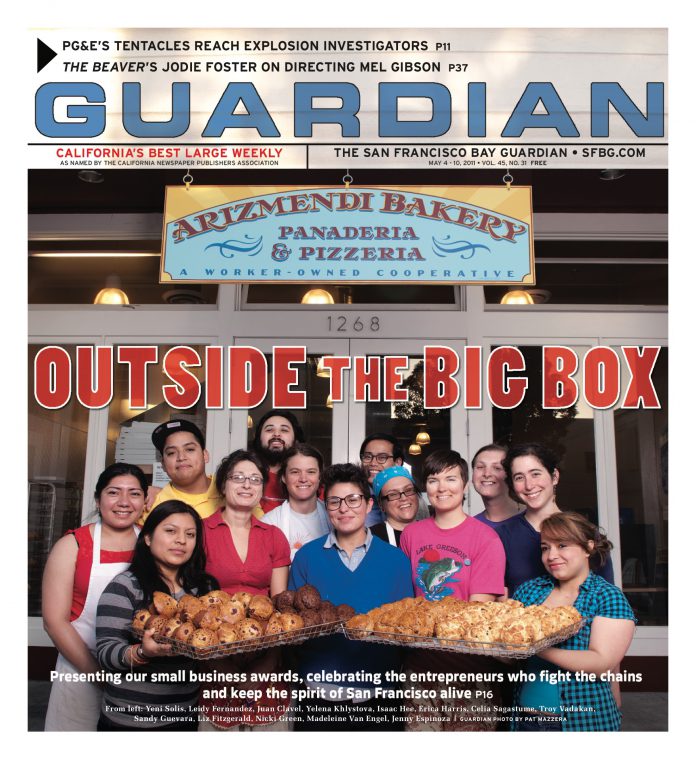arts@sfbg.com
LIT From the first page, an anonymous manifesto denouncing the pharmaceutical industry, to a bronze sculpture of a suppressed anti-Nazi headline from the Lippische Tages-Zeitung weighted down by a giant hammer and nails on the last, David Lester’s graphic novel The Listener (Arbeiter Ring Publishing, 304 pages, $19.95) explores how words often fail their intended purpose, precipitating actions with unforeseen consequences.
The unintended consequence of the manifesto: an amateur activist falls to his death while hanging a banner from a radio tower. The unintended consequence of the unpublished article: the rise of the Third Reich and the fall of a nation’s conscience. In Lester’s book, both events become entangled within the scope of Louise Shearing, a Canadian sculptor wracked with guilt over the death of the activist, who took the phrase “action speaks louder than words” to heart.
Although The Listener eventually makes reference to the fallen activist, Vann, being influenced by Louise’s sculpture of French anarchist Louis Michel, it’s not immediately clear to the reader why Louise, as opposed to the scribes behind the manifesto, must bear the brunt of the guilt over his death. Like many young people in a state of flux, Louise winds up backpacking across Europe, hanging out in art museums and hooking up with cute but pedantic European men. In one of those almost-magical chance encounters so common to the open road, she has a conversation with an elderly couple in a café, which culminates in an unexpected history lesson.
Rudolph and Marie are from the former German state of Lippe (now part of North Rhine-Westphalia), site of the last free election in Germany before Hitler took the chancellorship. As journalists and members of a smaller right-wing party (the DVNP), which balks at towing the Nazi Party line, they nonetheless go along with the suppression of an article exposing corrupt Nazi campaign tactics. The headline pulled at the last minute is preserved for posterity on a secret plate that Rudolph smuggles home. “Our failure to defeat the Nazis in Lippe is a regret we live with every day,” Marie says.
It’s tempting to draw a parallel between Lester’s The Listener and Jason Lutes’ Berlin, but to compare the two does The Listener a disservice. Where Berlin is a meticulously-rendered serial drama characterized by painstakingly clear lines and weighted text, The Listener is a shadowy morality play cloaked in the mantle of German Expressionism. The black guilt that weighs heavily within Louise and the German couple seeps across each page like a Rorschach blot. Each bleak frame is a single painting, rendered in messily urgent layers of gray, interspersed with replications of newspaper headlines trumpeting the rise of the Third Reich. Also unlike Berlin, most of the book’s action actually takes place in the present day, where the reverberations of the dead can be, and are, remarked on by the living.
The Listener flags during Louise’s unstructured attempts to ascertain what art means to her by discussing it at length. She swoons over Cézanne and deconstructs Picasso, but is so rarely shown in the act of creation that it’s easy to forget that her art has served as a catalyst for action. It’s possible to imagine Lester — painter, musician, activist — having these very conversations with himself, but they don’t have the same impact as the sculpture Louise finally creates in the last frame, a picture truly worth a thousand words.

